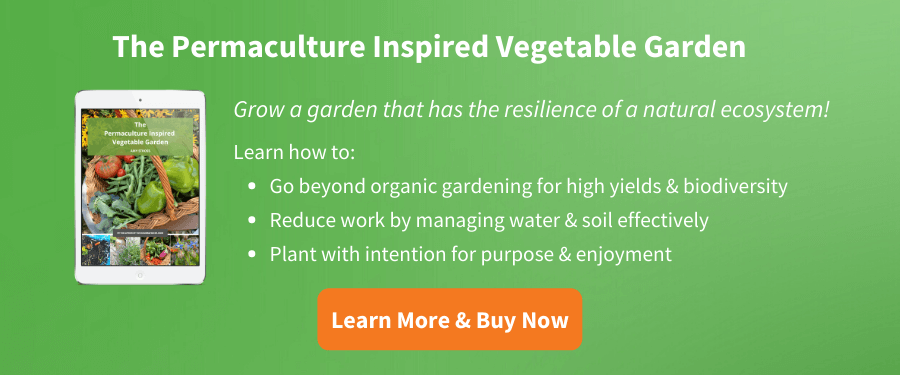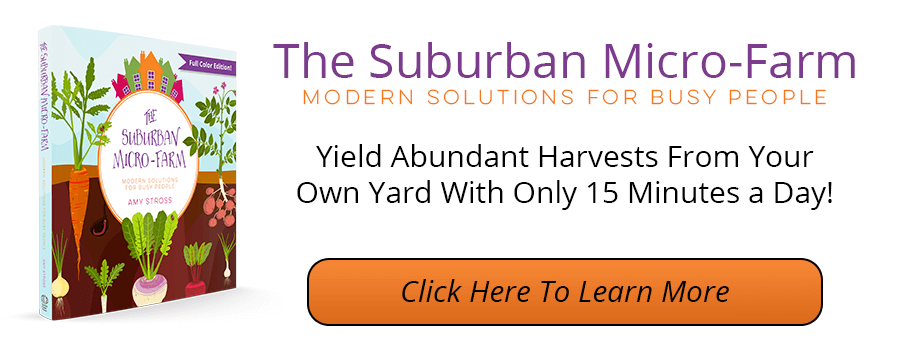How to Build and Easy Enclosed Compost

There are many ways to build a compost bin. However, you'll want to choose a design to meet your needs. Here are six compost bin designs to choose from.

This page may contain affiliate links. Please read my disclosure for more info.
There are a lot of different compost bin styles out there, but serious gardeners will want to be able to easily access the finished compost. The following are some of the compost bin styles that I've used.
6 Ways to Build a Compost Bin
1: The Compost Heap
Growing up, we composted by using a heap. We collected kitchen scraps in a compost pail, and my brothers and I took turns emptying it onto a giant compost pile in the corner of the yard. This heap is also where we put grass clippings and other yard waste.
Thirty years later, my parents are still using the same heap! Although you might be imagining a compost mountain after so many years, the truth is that the contents biodegrade, keeping the pile a consistent, inconspicuous size.
This is the easiest way to compost! The problem with the heap method is that there's no easy way to access the finished compost underneath recently added materials. So the rich goodness was rarely used.
2: The Round Wire Compost Bin
When Mr. TAF and I began composting together as newlyweds (romantic, right?), we started with a heap for sticks and brush and a simple, round wire bin that we made with 16-gauge galvanized wire fencing (48-60 inches tall) to compost kitchen scraps, grass clippings, and leaves.
It's pictured below on the right.

To harvest finished compost from a wire bin, you simply knocked it over. Harvest the finished compost from the bottom, then straighten it back up again to continue composting. If you're new to composting, this bin is a perfect way to get started!
The problem with the wire bin is that once you get really serious about composting, it isn't big enough. However, that's an easy problem to solve. Just make more wire bins!
Would you like to yield delicious harvests while partnering with nature? Check out my ebook, The Permaculture Inspired Vegetable Garden.

3: The Worm Compost Bin
Worm castings (i.e., worm compost) are the richest known natural fertilizer. So why not try vermicomposting, i.e., worm composting? It's a simple and cheap method.
Worm bins can even be kept inside, which is what enticed me to give it a try. When the weather is bad, I love being able to walk downstairs to the garage with my kitchen pail rather than outside.
Here are my plans for making a worm bin. You'll also want to check out worm bin problems for beginners.
I add worm compost to my garden beds, seed starting mixes, and even to the planting holes for fruit trees and other perennials.

The next two types of compost bins are variations of the same design: The Three-Bin Turning Unit .
Years ago, Mr. TAF completed a Master Composter course, and the three-bin composting system was the holy grail of all compost piles. That's because the frequent turning helps the contents compost faster, and it's easy to harvest the finished compost from it.
The only drawback to this turning unit is that it's a more active way to compost and requires a bit more effort than the more passive compost bin designs above. But if you want finished compost more quickly, and you like a neat-and-tidy aesthetic, this is a good system for you.
4: The Wood-and-Wire Three-Bin Turning Unit
Below is the wood-and-wire unit that we built. Get the plans here.

The way it works is that food scraps are always added to the bin on the left. Next to the Add-to-Pile bin I keep a round wire bin (our old wire bin!) filled with leaves. When adding food scraps, I cover them with handfuls of leaves.
Some people use straw, sawdust, or other types of "brown" material if leaves aren't available. Whatever material you use, it's important to cover food scraps to avoid pests and odors, as well as to speed the composting process.
Once the Add-to-Pile bin is full, I use a pitchfork to scoop it into the middle bin. The wooden slats on the front of each bin are removable to make "turning" (moving the contents from one bin to the next) easier. This turning process aerates the pile, which speeds up composting.
When the Add-to-Pile bin is full a second time, the existing contents of the middle bin are moved to the Finished Compost bin on the right. Contents generally take about 2-3 months to compost completely.
By the time you're ready to turn a third time, the contents in the Finished Compost bin should be ready to spread in the garden.
This is a really nice setup that keeps composting nice and orderly in the urban or suburban backyard. However, it's not the cheapest to build.
Would you like to learn more about making and using compost to improve soil and reduce cost and waste?
You'll find loads of information just like this in my award-winning book, The Suburban Micro-Farm .

5: The Pallet Three-Bin Turning Unit
We needed a cheaper option at our community garden, so we built the same three-bin unit using free pallets.
We secured each corner using a steel T-post, which you can barely see poking up from each corner in the picture below. We made makeshift doors using wire and hardware cloth. It's not as pretty, but it does the job!

Because the community garden is on the campus of a university, we hung an educational sign about composting to give directions for anyone wanting to compost food scraps:

The community garden is a popular place for students and faculty to eat lunch or a snack in between classes.
6. Build a Compost Heap in a Day
For those without space limitations and access to composting materials in bulk, building organized compost heaps can yield lots of finished compost all at once, which is essential for anyone starting new gardens on a budget.
John Jeavons inHow to Grow More Vegetableshas an excellent chapter on building organized compost piles. He recommends finding a spot underneath an oak tree or other deciduous tree because they provide shade throughout the summer as well as a windbreak.
The fastest way to yield finished compost is to build a compost pile all in one day. This way, the pile heats up faster than adding little bits of material at a time.
To try it, gather your materials. The pile will be a square that is a minimum of 4 feet long by 4 feet wide, and 4 feet tall. To create compost quickly and evenly, you'll need at least three different types of materials, plus a bit of soil, which inoculates the compost with beneficial soil microbes.
- The first (woody) layer includes small sticks, twigs, and dried stalks.
- The second (brown/carbon) layer consists of dry vegetation such as leaves, chemical-free straw, or dried grass.
- The third (green/nitrogen) layer consists of green vegetation such as weeds, fresh grass clippings, food scraps, and even coffee grounds.
- The final (microbe) layer is soil.
Be sure to select the right ingredients to keep persistent herbicides out of your compost bin.
Measure out the space for the heap and loosen the soil using a digging fork. Each layer is about 2 inches thick. Alternate in the above order until you reach the desired height, topping with the soil.
This heap doesn't require turning, and should be ready in about 1-2 months' time.

An old compost heap turned into a raised bed of mostly herbs.
Summary: Building a Compost Bin
For many people, a combination of composting methods is the best way to turn free resources such as food scraps, coffee grounds, livestock bedding, and yard waste (grass clippings, leaves, weeds) into a rich garden amendment.
The combination of composting methods you use will depend on how much space you have and other unique factors.
This book is a great resource: Compost Everything
Which compost bin designs meet your needs?
READ NEXT:
- How to Source Herbicide-Free Compost Soil
- Mulching in the Permaculture Garden
- When Weeds are Good
>>> Get my free 19-page Guide to Organic Soil Amendments for more ideas:
Source: https://www.tenthacrefarm.com/building-the-right-compost-bin/
0 Response to "How to Build and Easy Enclosed Compost"
Post a Comment